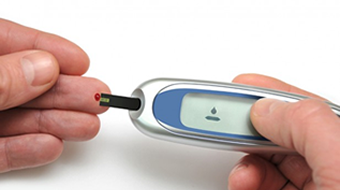
In part one of this series on diabetes we discussed different types of the disease, how you get type 2 diabetes and how type 2 diabetes can cause a host of health issues, some of them life-threatening.
Symptoms and Diagnosis
First and foremost, if you begin to experience any symptoms of diabetes, you should be tested immediately. Common symptoms are fatigue, extreme thirst, blurred vision, the frequent need to urinate, unexplained weight loss, nausea and vomiting.
Obviously, any one of these symptoms can occur for numerous reasons. But if they are persistent and there are multiple symptoms, see your doctor. Second, anyone over the age of 45 should be checked and if all is well with your first blood test and you have no other issues, you can wait three years to be checked again. The American Diabetes Association has established the following risk factors for type 2 diabetes:
• Adults who are overweight (BMI ≥25 kg/m2)
• Physical inactivity
• First-degree relative with diabetes
• Women who have delivered a baby weighing more than 9 pounds or were diagnosed with gestational diabetes
• Hypertension (140/90 mm Hg or on therapy for hypertension)
• HDL cholesterol level <35 mg/dL (0.90 mmol/L) and/or a triglyceride level >250 mg/dL (2.82 mmol/L)
• Women with polycystic ovarian syndrome (PCOS)
• A1C ≥5.7%, impaired glucose tolerance or impaired fasting glucose on previous testing
• Other clinical conditions associated with insulin resistance (such as severe obesity and Acanthosis Nigricans—a skin disorder in which there is darker, thick, velvety skin in body folds)
• History of cardiovascular disease
There are three common tests to see if you are pre-diabetic or diabetic: fasting blood sugar, oral glucose tolerance test, and HbA1C test. If your numbers in either of the first two test indicate that you are becoming or are diabetic, the A1C test will be preformed. While the other two tests tell us what your blood sugar is at the time of the test (12 hours of fasting prior), the A1C gives us a bigger picture as to how your blood sugar has been behaving over a longer period of time of over 2-3 months. If these tests show you to be pre-diabetic or even diabetic, there is no need to panic. But there is a need to act!
Medications
Diabetic drugs can save your life and also give you a better quality of life. And for someone unwilling to make lifestyle changes, they are necessary in order to survive. Among the many drugs you may have heard of are glucophage, metformin, and of course insulin. But these drugs all come with side effects and if we can learn how to eat correctly and how to exercise correctly, perhaps we can wean ourselves off these drugs or avoid taking them in the first place.
Metformin or glucophage, for instance, give more than half of the people taking it diarrhea. Nausea and vomiting occurs in about 25% of people and in a lower percentage of people there are problems of fatigue, headaches, and indigestion.
People on insulin have to regulate their intake to make sure they are taking enough, but not too much. Mistakes in either direction can cause terrible complications and ultimately can be fatal. As a former EMT, I saw people in a dangerous state of hypoglycemia on a few occasions, where only rapid transportation to the emergency room and a quick infusion of 50% dextrose saved their lives. In some cases, it was a matter of only another 30-60 minutes before death may have set in. Diabetic coma is also potentially a life-threatening complication if doses and food intake are not regulated correctly.
The Alternative to Managing your Diabetes
The first step in controlling or conquering this disease is to learn how to eat properly as a diabetic. There is a lot of misguided information about what diabetics can and can’t eat and much of it has no basis in science. One thing I hear all the time—that diabetics can’t eat carbs and can’t eat sugar—NOT TRUE! What is true is that you have to know how much to eat, how to apportion your carbs, proteins and healthy fats and you also have to understand how often you should be eating. The “small portions, more often” approach is vital for a diabetic—more so than what kind of foods to eat. See a registered dietician who has experience and expertise in treating diabetes. Stay away from people who make claims, but aren’t qualified. Last year, a woman who came into my program had been told that her type 1diabetes was curable—not possible!
She was put on a ridgid diet that was incredibly unbalanced and even though she lost a lot of weight on that program, she ended up gaining it back and her blood sugar readings were extremely high. Do research and make sure you are dealing with a professional with plenty of experience.
In Part III, we will look at what specific types of exercises diabetics should be performing and how often they need to do them in order to conquer their diabetes and bring themselves quality of life right through old age.
Alan Freishtat is an A.C.E. CERTIFIED PERSONAL TRAINER and a BEHAVIORAL CHANGE and WELLNESS COACH with over 19 years of professional experience. Alan is the creator and director of the “10 Weeks to Health” program for weight loss. He is available for private coaching sessions, consultations, assessments and personalized workout programs both in his office and by telephone and skype. Alan also lectures and gives seminars and workshops. He can be reached at 02-651-8502 or 050-555-7175, or by email at alan@alanfitness.com Check out the his web site –www.alanfitness.com US Line: 516-568-5027.
The words of this author reflect his/her own opinions and do not necessarily represent the official position of the Orthodox Union.

